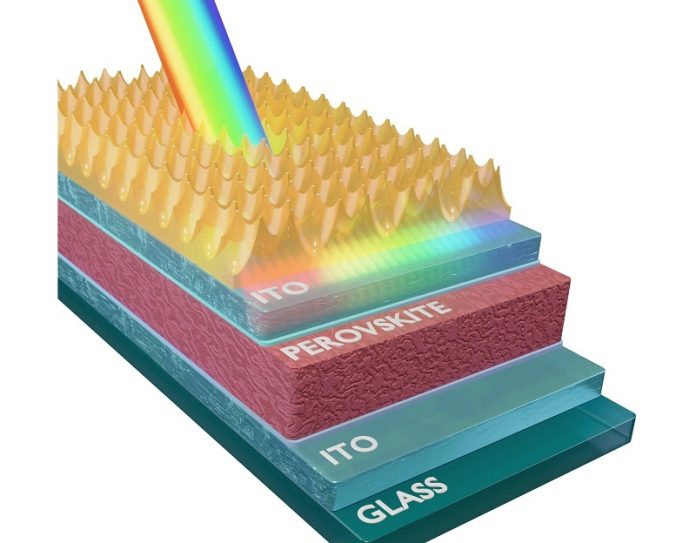
A group of bright minds from the Fraunhofer Institute for Solar Energy ISE and the University of Warsaw’s Faculty of Physics have made a groundbreaking discovery in the world of solar energy.
They have found a way to make perovskite solar cells – a hot topic in renewable energy discussions – work even more efficiently using a clever design pattern.
Their findings were recently shared in a journal named Advanced Materials Interfaces, and it promises an exciting future for all of us in the realm of clean energy.
First off, what are perovskite solar cells?
They’re a kind of material used to make solar panels, and scientists are excited about them because they might be a key player in future solar technologies.
These cells are gaining attention for being not only effective at generating energy but also relatively cheap and straightforward to produce. However, as brilliant as they are, they come with their own set of challenges.
One of these challenges relates to ‘optical losses’ – in simpler terms, this is about how much sunlight gets wasted instead of being turned into electricity.
The sun blasts out a lot of energy, but not all of it gets converted into the power that runs your electronic devices. So, if we manage to catch and use more of that sunlight, our solar cells work better and generate more energy. Easy enough, right?
Here’s where the new research comes into play. The scientists have devised a way to sculpt the surface of these perovskite cells with a pattern that looks like a honeycomb (similar to what you’d find inside a beehive).
This isn’t just for looking pretty, though. This particular pattern helps trap more sunlight, reducing the amount that gets wasted through reflection, and thereby boosts the amount of electricity generated.
Creating this honeycomb-like pattern on perovskite was not straightforward. Unlike silicon cells, which can be etched with strong chemicals to create a pattern that captures more light, perovskite cells are a bit more delicate and can be damaged by these harsh substances. This called for a different approach.
That’s where the method called “nanoimprinting” comes into the picture. Imagine stamping a pattern onto a surface, much like how certain patterns are printed on paper, but on a much, much smaller scale – we’re talking nanometers!
The scientists used this technique to safely and delicately create the honeycomb pattern on the perovskite cells, ensuring they catch more light without being damaged in the process.
One of the coolest aspects of this research is scalability, meaning this isn’t just a tiny experiment that works in a lab – it can be brought to bigger productions too.
This is super important because it keeps the process cost-effective and feasible for making lots and lots of solar panels in the future.
Moreover, the researchers emphasized that this technique doesn’t harm the perovskite and that it can be adapted for various cell designs, which is a big win! Until now, making patterns like this required additional steps that could potentially damage the material or be unsuitable for large-scale production.
What’s even more exciting is that this new method can work when perovskite is used alongside silicon in what are known as ‘tandem’ cells, combining their powers to make even more efficient solar panels.
This discovery paves the path towards enhancing the architecture of emerging photovoltaic technologies, aiming to further bump up efficiency levels.
This breakthrough is like learning a new, vital move in the chess game against climate change. These enhanced perovskite cells, with their tiny, intricate, honeycomb patterns, have shown that they can step up and help us create cleaner, more efficient energy in the future.
So, hats off to the researchers who, in their deep dive into the tiny world of nanometer scales, have found a way to make a big, positive impact on our global energy landscape.
Follow us on Twitter for more articles about this topic.



